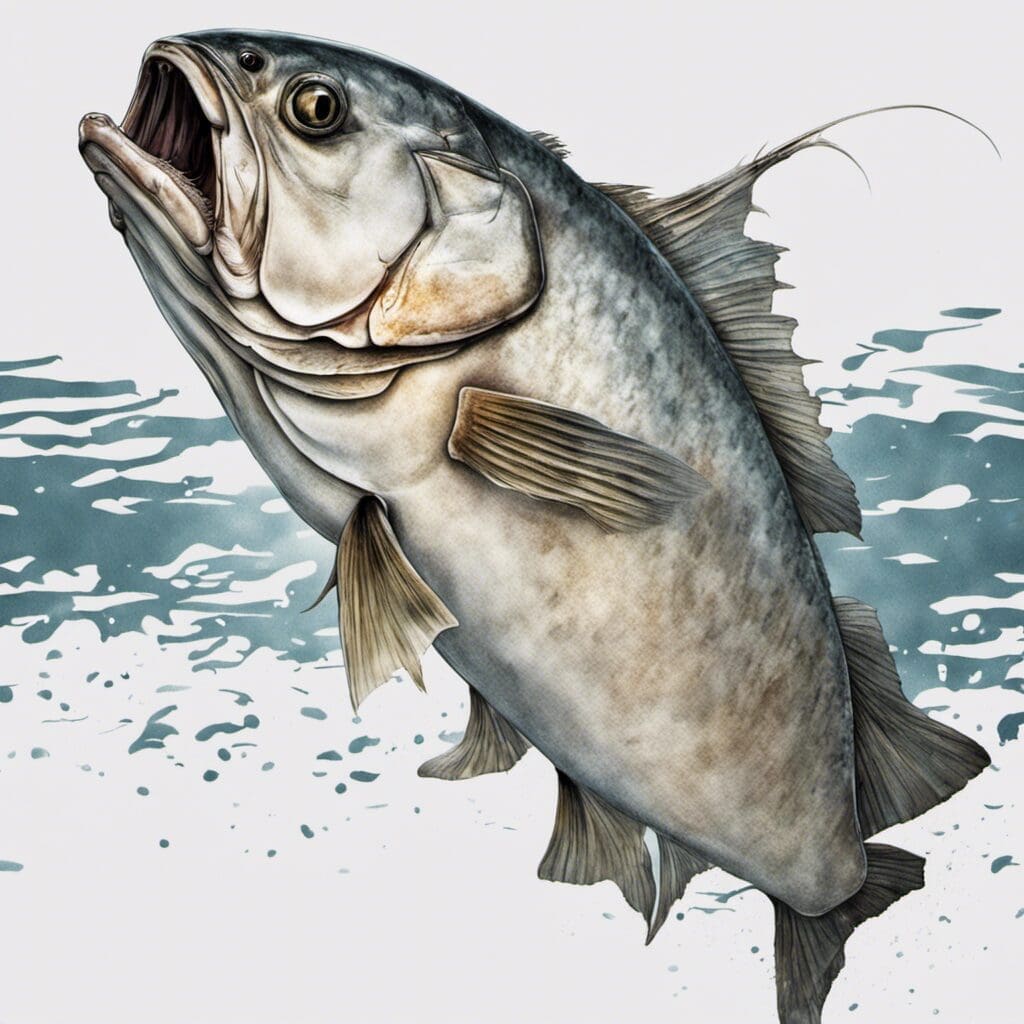Species Name: Wreckfish
Family Name: Polyprionidae
The Wreckfish, scientifically known as Polyprion americanus, is a species that belongs to the Polyprionidae family. This massive, deep-sea dweller is often found lurking near underwater caves and shipwrecks, which is how it earned its common name.
Conservation Status
Current status: Not Evaluated
Conservation efforts: Regulated by selected fishing quotas
The conservation status of the Wreckfish is currently not evaluated by the IUCN. However, fisheries that operate in their habitats are generally regulated by fishing quotas to prevent excessive exploitation.
Statistics
| Attribute | Average | Range |
|---|---|---|
| Length | 100 cm (Adult) | Up to 210 cm |
| Weight | 40 kg (Adult) | Up to 100 kg |
| Average Lifespan | 30-70 years | — |
| Sexual Maturity | 5-6 years | — |
They are typically 100 cm as adults, with their size reaching up to 210 cm. They weigh an average of 40 kg, but they can balloon to an astounding 100 kg. They live exceptionally long lives, between 30 to 70 years, and achieve their sexual maturity by the age of 5 or 6.
Distribution
Regions/Countries: Atlantic coast, Northeast United States, West African coast, Mediterranean Sea
Migration patterns: Very little is known about their migration patterns
Wreckfish are widely distributed across the world from the Atlantic coast in the Northeast United States to the depths of the West African coast and Mediterranean Sea. Exact migration patterns of the Wreckfish remain largely unknown.
Habitats
Water Type: Saltwater
Depth Range: 40-600 meters
Temperature Range: Prefers cooler waters
These are saltwater creatures, preferring cooler conditions with a depth range of around 40-600 meters.
When and Where to See
Seasonal Patterns: Year-round with peak in winter and spring
Time of Day: No specific time
These fish are present year-round, though sightings tend to peak during winter and spring. There isn’t a specific time of day when they are particularly active or visible.
Best Fishing Locations
Wreckfish can be found in numerous deep-sea locations around the globe. Some popular spots include:
1. Georges Bank, United States
2. The Rockall Trough, Northern Atlantic
3. Porcupine Seabight, Ireland
4. Mediterranean Sea
5. Straits of Florida
6. Canary Islands, Spain
7. Cape Verde
8. Azores
9. Madeira
10. Gulf of Mexico
BBest bet for finding Wreckfish would be to search near deep-sea wrecks and above underwater mountains or caves.
How to Catch
Preferred Bait or Lures: Squid, mackerel, cut bait
Fishing Techniques: Bottom fishing with heavy tackle
Best Time of Day or Season: Winter and spring
Wreckfish are primarily caught using bottom fishing techniques with heavy tackle due to their size and the depths at which they occur. Preferred baits are squid, mackerel or other cut bait. Winter and spring are the best seasons for fishing Wreckfish.
Identification Guide
Wreckfish are grey/brown in color, with a strong body, a protruding lower jaw, and a high second dorsal fin. They are often mistaken for Groupers due to similar physical features, but the defining characteristic would be their cleft, asymmetrical tail fin.
Culinary
How to Cook: Grilling, frying, baking
Taste Profile: Firm, white meat, mildly sweet
Nutritional Information: Rich in protein and Omega-3 fatty acids
Recipes: Wreckfish Tacos, Grilled Wreckfish, Wreckfish Ceviche
Wreckfish has firm, white meat with a mildly sweet flavor. It’s a versatile and nutritious food option, packed with protein and Omega-3 fatty acids. It can be grilled, fried or baked, and is a star ingredient in recipes like Wreckfish Tacos, Grilled Wreckfish, and Wreckfish Ceviche.
Additional Information
Behavior: Solitary, territorial
Predators and Threats: Sharks, Large Groupers, Human Fisheries
Cultural/ Historical Significance: A major source of protein in Mediterranean and American cuisines
Wreckfish tend to be solitary and territorial. Main predators include sharks and large groupers, and of course, humans who catch them for their firm, tasty flesh. Wreckfish hold a significant place in Mediterranean and American cuisines as a major source of protein.
References and Further Reading
1. “Life History and Habitat Characteristics of Wreckfish” by NMFS
2. “The Wreckfish Polyprion americanus in the North-east Atlantic” by ICES Journal of Marine Science
3. “New biological information on the wreckfish in the eastern North Atlantic” by ICFA

